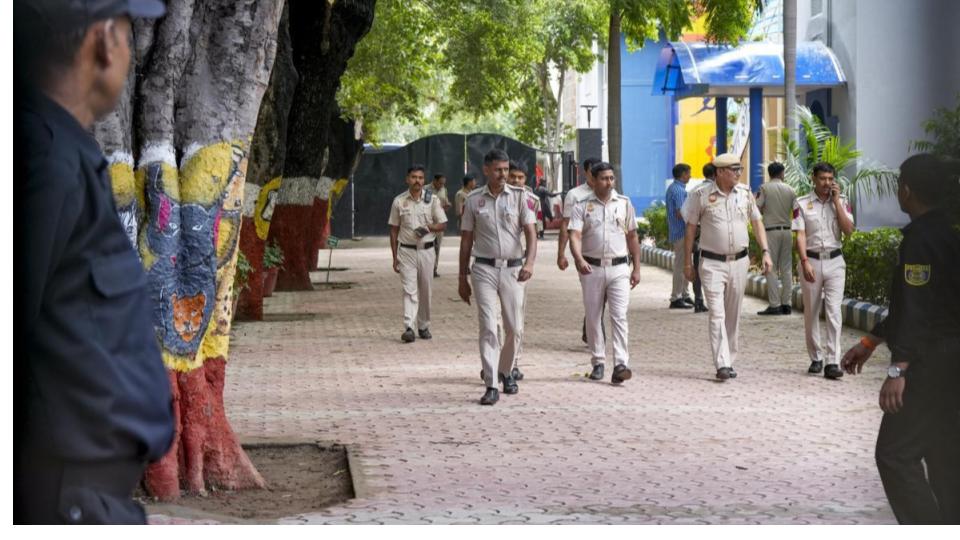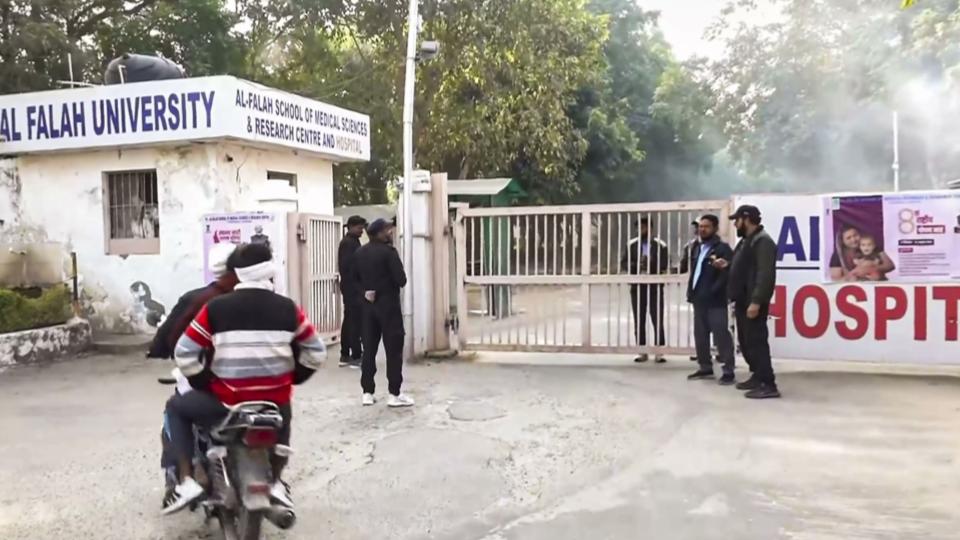Osmania University Arts College building rotting in silence
Fri 23 Aug 2024, 00:57:53
.jpg)
The once-majestic Arts College building of Osmania University, a symbol of Telangana’s academic and political history, is now crying out for urgent attention.
The structure’s deteriorating condition, evident in its water-stained walls and rampant mold growth, is a stark contrast to its former glory. The pinkish granite edifice, once a source of pride for the university, has fallen victim to years of neglect.
The building’s water seepage problems have created ideal conditions for mold to thrive, leading to unsightly black marks and an unhealthy environment for students and staff. The mold growth is not only damaging the structure but also posing a health risk to those who spend time within the building’s walls. Widespread black mold with damp marks on the wall of the first floor of the Arts College are visible to the naked eye from afar.
The modern-age waterproofing system, which has recently been employed by the university administration to arrest seepage from the rooftop, has failed miserably. The neglect of the Arts College building extends far beyond mold growth. Portions of the walls and ceiling, including near the iconic Central Dome, have collapsed, revealing the iron beams. These
disturbing signs of structural failure reflect the dire state of the college.
disturbing signs of structural failure reflect the dire state of the college.
To preserve the historic structure, a specialised chemical treatment is urgently needed to address the damaged walls and ceiling. However, instead of investing in a long-term solution, the university administration has resorted to temporary fixes, such as patching the damaged areas with cement. “These walls require special chemical treatment for restoration. However, cement has been used as a temporary measure, which has caused more damage to the walls,” official sources said.
The ornate railings on the first floor of the building are now riddled with long cracks, compromising their structural integrity. Rust stains mar the railings, a clear evidence of the building’s neglect. While college officials attribute the rust to the cracked railings, the underlying problem appears extensive.
The installation of air conditioners has also taken a toll on the structure. Additionally, the traditional charm of the classrooms and halls has been compromised by the installation of false ceilings and the replacement of traditional flooring with tiles and plywood. These changes have sacrificed the building’s unique character and comfort.
No Comments For This Post, Be first to write a Comment.
Most viewed from Hyderabad
Most viewed from World
AIMIM News
Latest Urdu News
Most Viewed
May 26, 2020
Who will win The 2025 ICC Women's Cricket World Cup?
Latest Videos View All
Like Us
Home
About Us
Advertise With Us
All Polls
Epaper Archives
Privacy Policy
Contact Us
Download Etemaad App
© 2025 Etemaad Daily News, All Rights Reserved.

.jpg)









.jpg)
.jpg)
























.jpg)
.jpg)
.jpg)


